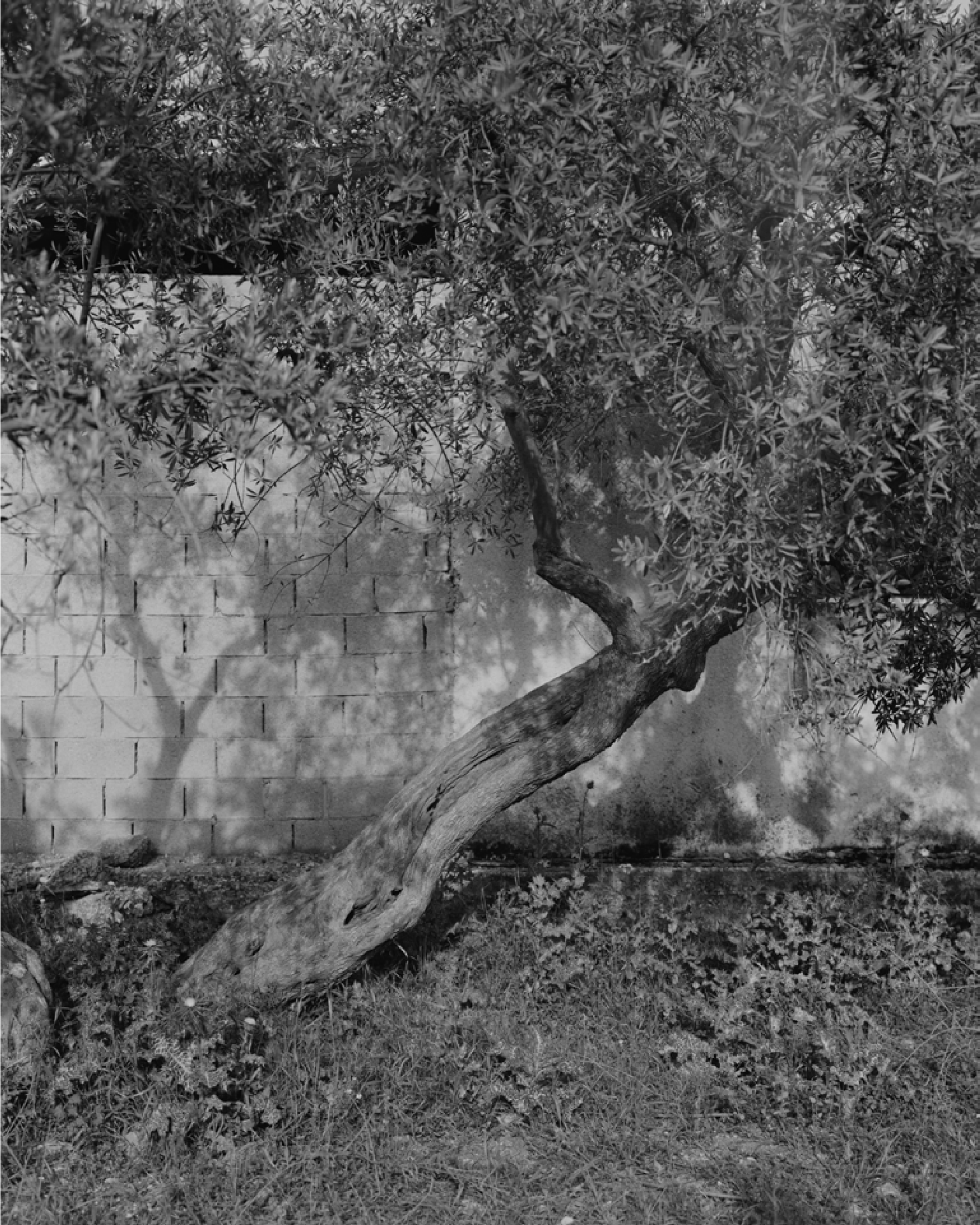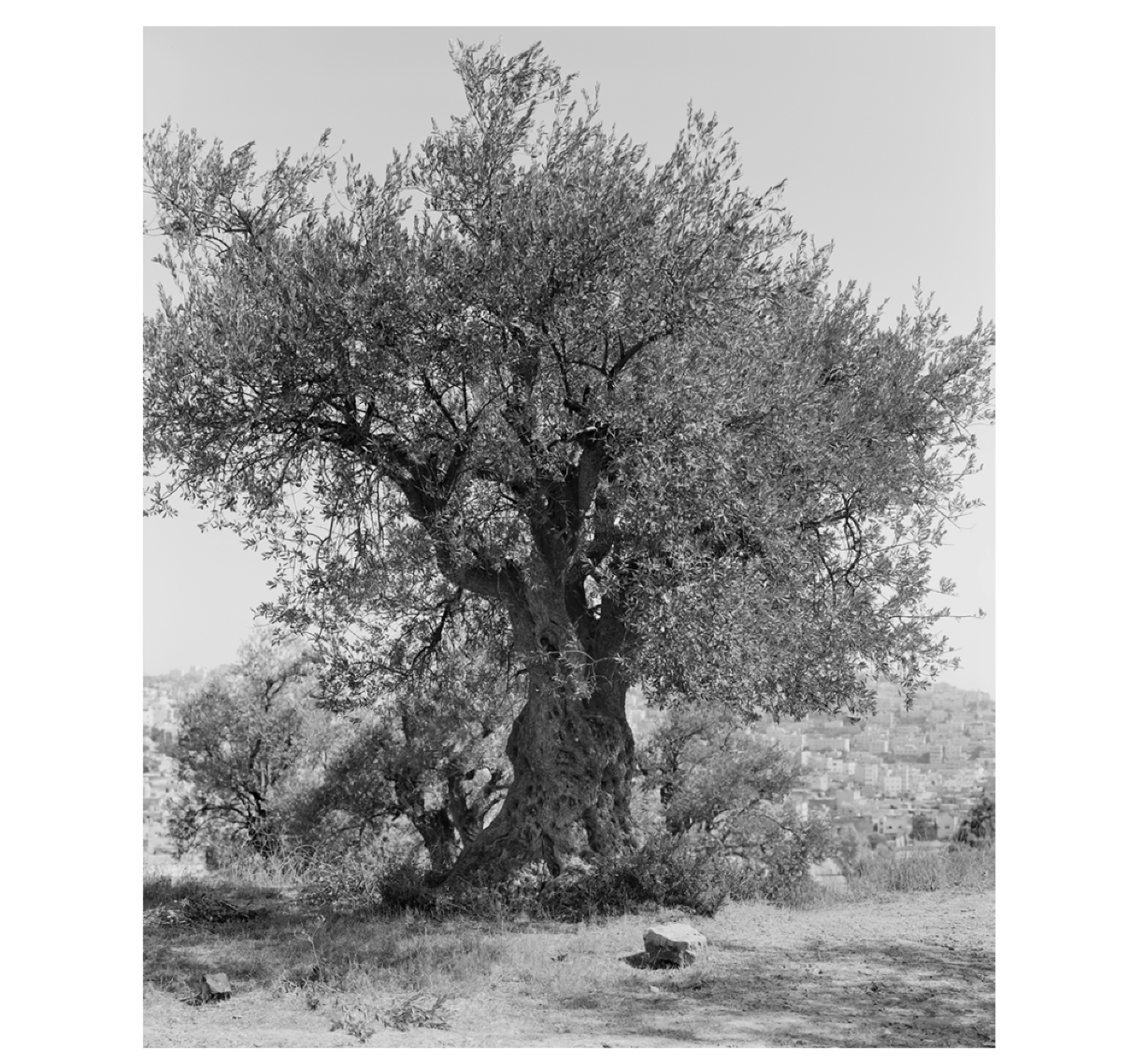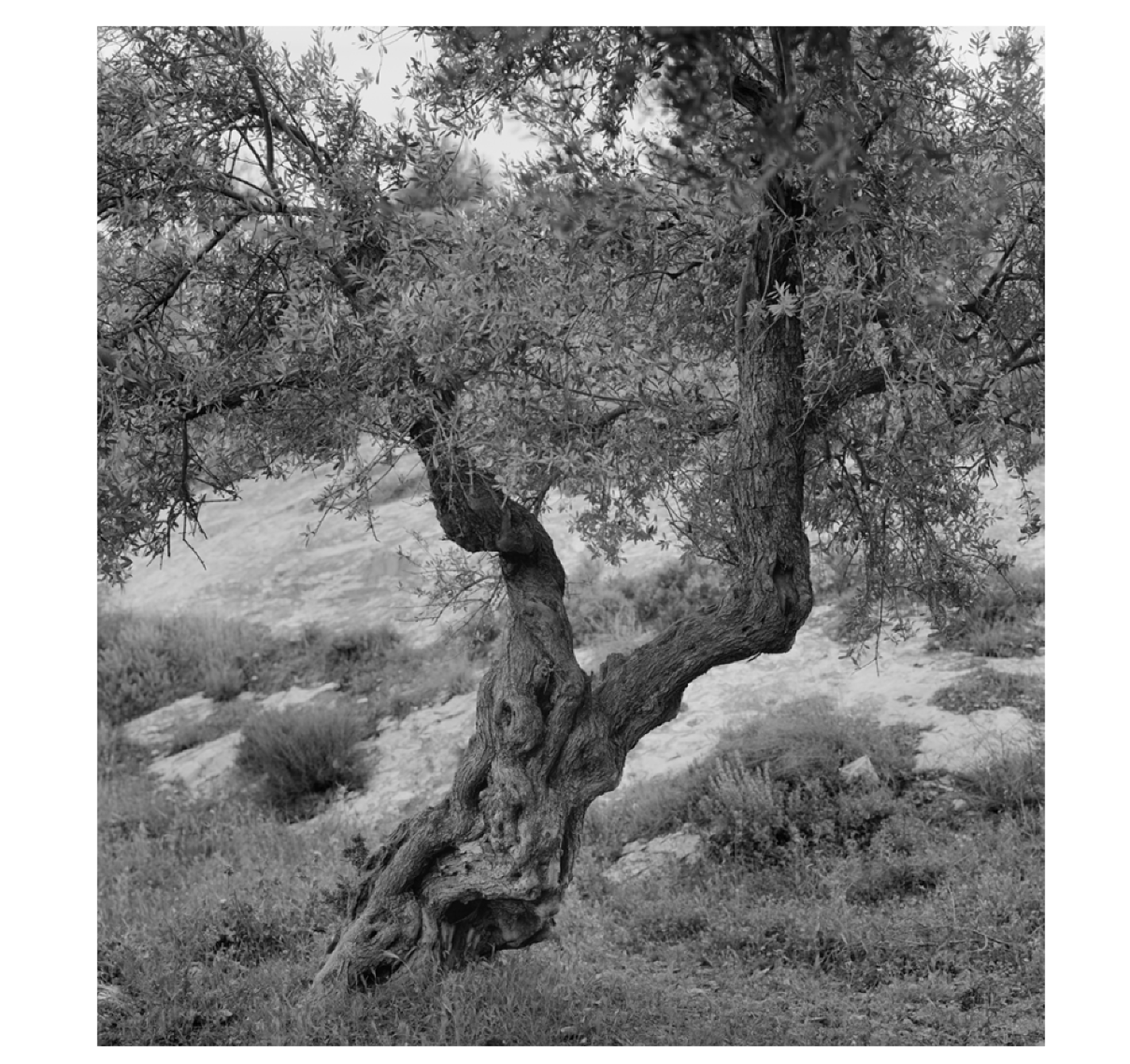
Palestine has always been the home of olive trees. Their roots dig deep into the land and provide a harvest that is the basis of Palestinian identity and cuisine. The slim outlines of the olive leaf adorn the traditional keffiyeh - which has been worn with pride by Palestinians and allies since the 1930s as a national symbol for the self-determination of the people.
Al-Badawi is likely the oldest olive tree in the world.1 Standing near Bethlehem, the tree has been alive for 4-5,000 years. Its existence is now endangered by the threat of new Israeli settlements and walls that plan to extend onto its roots.2
Adam Broomberg and Rafael Gonzalez have spent the last few years documenting, photographing, and archiving olive trees in Palestine. In the new publication Anchor in the Landscape, portraits of these endangered heirlooms stand tall and proud. Some of them are corralled by fences and impending settlements, others breathe free in rural orchards. All of them are a testament to the resilience and rootedness of the land.



Mahmoud Darwish
Translated by Marilyn Hacker
The olive tree does not weep and does not laugh. The olive tree
Is the hillside’s modest lady. Shadow
Covers her single leg, and she will not take her leaves off in front of the storm.
Standing, she is seated, and seated, standing.
She lives as a friendly sister of eternity, neighbour of time
That helps her stock her luminous oil and
Forget the invaders’ names, except the Romans, who
Coexisted with her, and borrowed some of her branches

To weave wreaths. They did not treat her as a prisoner of war
But as a venerable grandmother, before whose calm dignity
Swords shatter. In her reticent silver-green
Color hesitates to say what it thinks, and to look at what is behind
The portrait, for the olive tree is neither green nor silver.
The olive tree is the color of peace, if peace needed
A color. No one says to the olive tree: How beautiful you are!
But: How noble and how splendid! And she,
She who teaches soldiers to lay down their rifles

And re-educates them in tenderness and humility: Go home
And light your lamps with my oil! But
These soldiers, these modern soldiers
Besiege her with bulldozers and uproot her from her lineage
Of earth. They vanquished our grandmother who foundered,
Her branches on the ground, her roots in the sky.
She did not weep or cry out. But one of her grandsons
Who witnessed the execution threw a stone
At a soldier, and he was martyred with her.
After the victorious soldiers
Had gone on their way, we buried him there, in that deep
Pit – the grandmother’s cradle. And that is why we were
Sure that he would become, in a little while, an olive
Tree – a thorny olive tree – and green!


